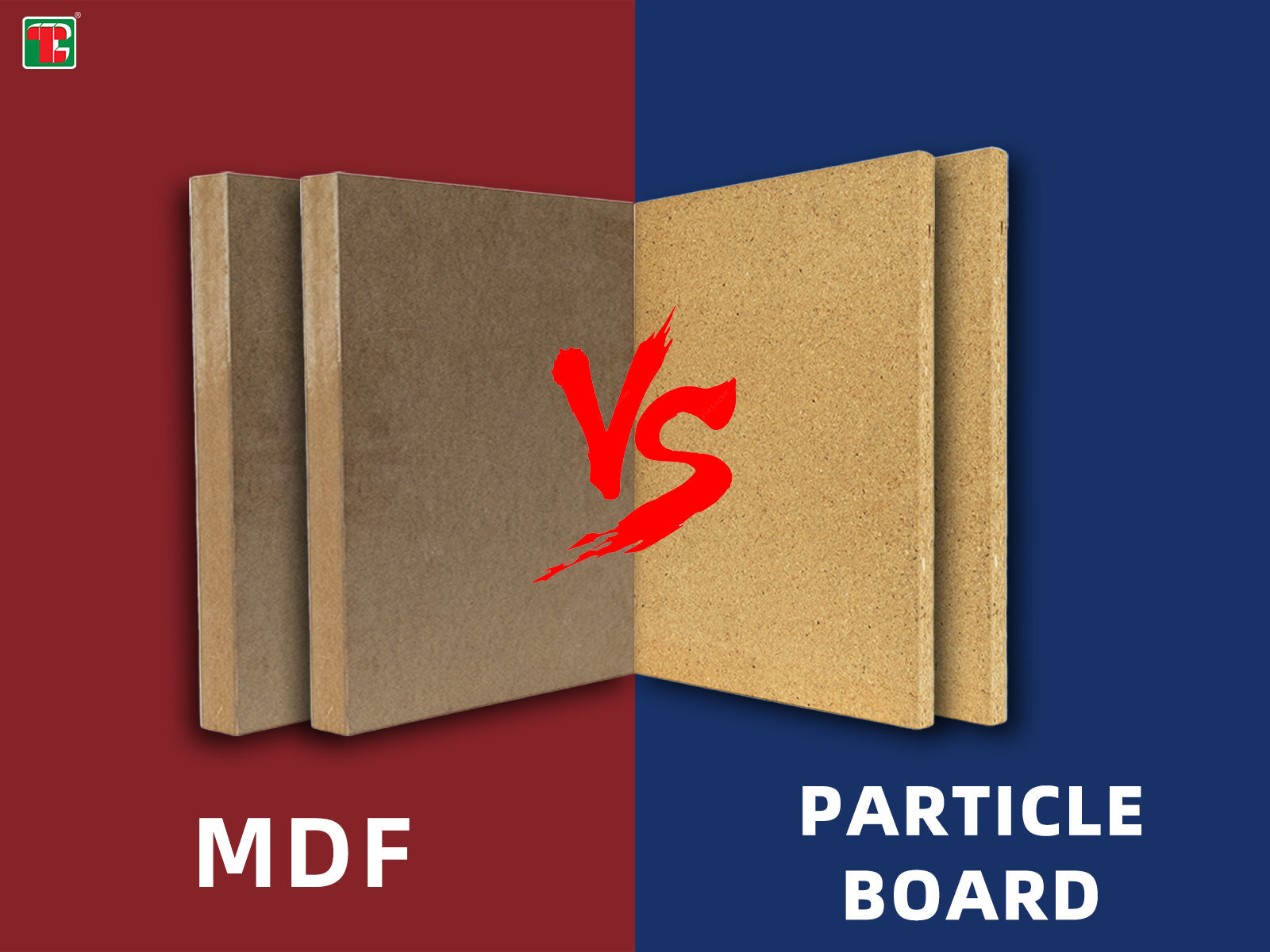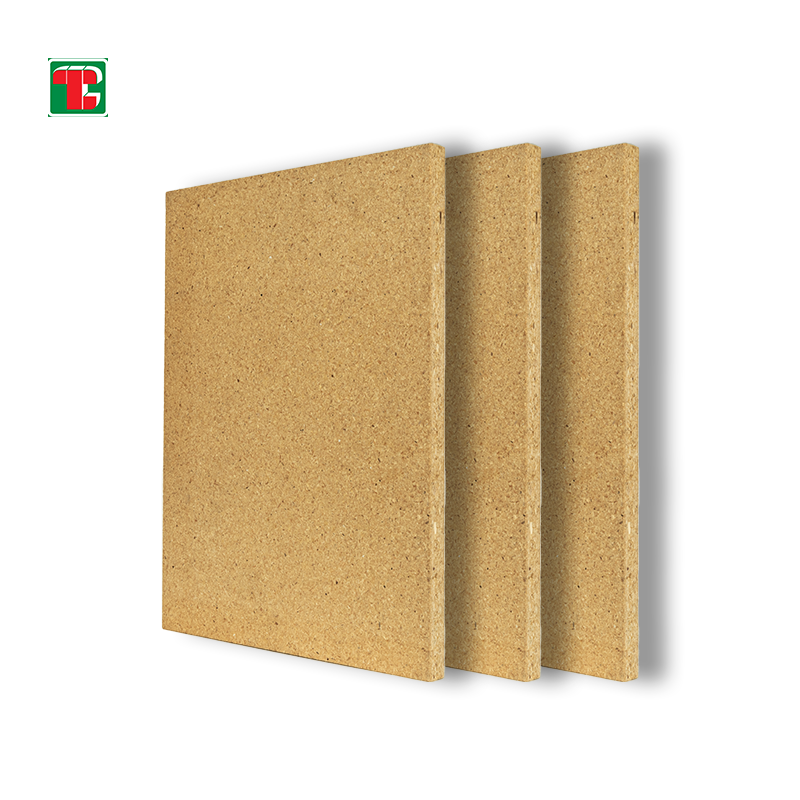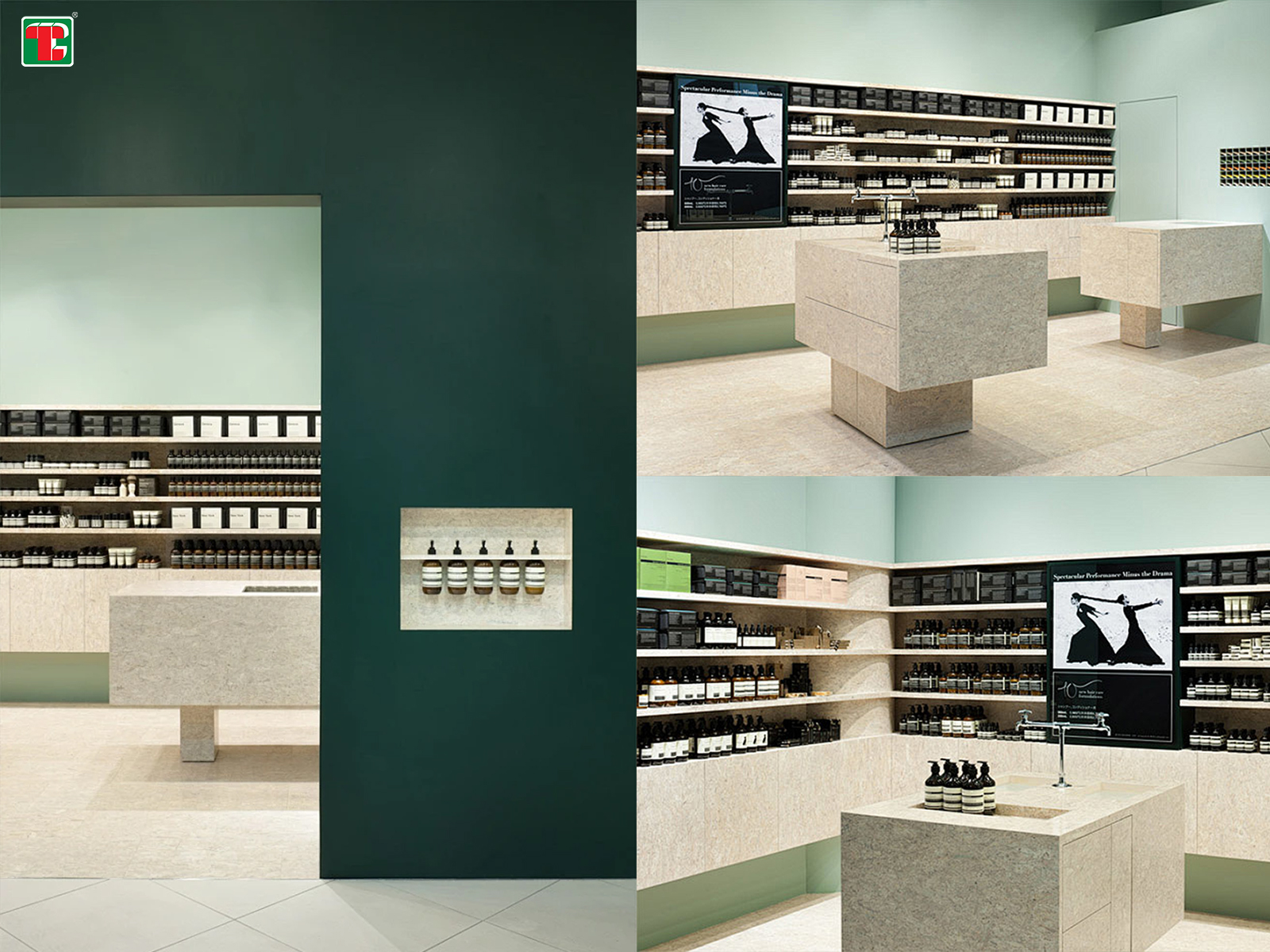In the realm of home renovation and furniture making, choosing the right material is paramount. Among the array of options available, MDF (Medium-density fibreboard) and particle board stand out as popular choices due to their affordability and strength. However, understanding the differences between these engineered wood composites is crucial for making informed decisions.

What is MDF
Medium-density fibreboard (MDF) is an engineered wood product composed of wood fibres mixed with resin binders and wax. Through a meticulous process, wood fibres are refined into fine grains, then combined with adhesive agents before being subjected to high temperature and pressure to form dense, uniform panels. MDF boasts a smooth surface finish, devoid of voids or splinters, making it an ideal material for various applications in home and office interior décor, furniture making, and cabinetry.

What is particle board
Particle board, on the other hand, is another engineered wood product crafted from waste-wood materials such as wood chips, sawdust, and shavings. These materials are blended with adhesive agents, typically urea-formaldehyde resin or phenolic resin, and then compressed under heat and high pressure to create particle board panels. Unlike MDF, particle board may exhibit a rough and porous surface due to the size and nature of its particles. Despite its surface texture, particle board remains a popular choice for its affordability and versatility in lightweight furniture, wall partitions, and other interior applications.

The manufacturing process of MDF and particle board
MDF
Manufacturing Medium-density fibreboard (MDF) involves a meticulous process beginning with the refinement of wood fibres into fine grains. These wood fibres are then mixed with resin binders and wax to form a homogenous mixture. The prepared mixture is subjected to high temperature and pressure within specialized machinery, resulting in the formation of dense, uniform MDF panels. This process ensures that the final product possesses a smooth surface finish and consistent density throughout, making MDF suitable for a wide range of interior applications such as furniture making, cabinetry, and decorative elements.
Particle board
Particle board, in contrast, undergoes a distinct manufacturing process utilizing waste-wood materials like wood chips, sawdust, and shavings. These materials are combined with adhesive agents, typically urea-formaldehyde resin or phenolic resin, to create a uniform mixture. The mixture is then compressed under heat and high pressure, forming particle board panels. Due to the nature of its composition, particle board may exhibit a rough and porous surface texture. Despite this characteristic, particle board remains a cost-effective option for lightweight furniture, wall partitions, and various interior applications.
Properties Comparison:
When comparing the properties of Medium-density fibreboard (MDF) and particle board, several key differences emerge:
1.Appearance:
MDF: Offers a smooth surface finish with no voids or splinters, providing a sleek and uniform appearance.
Particle Board: Tends to have a rough and porous surface due to the nature of its particle composition, requiring additional finishing techniques for a smoother appearance.
2.Strength and Density:
MDF: Exhibits higher density and strength compared to particle board, making it more durable and capable of supporting heavier loads.
Particle Board: Has lower density and inherent strength, making it more susceptible to warping, splitting, and buckling under heavy loads.
3.Moisture Resistance:
MDF: Shows greater resistance to moisture due to its fine fibre composition and lack of voids, making it less prone to swelling, cracking, and discoloration.
Particle Board: Has lower resistance to moisture, often experiencing swelling, cracking, and discoloration when exposed to moisture or humidity due to its composition of wood particles and void spaces.
4.Weight:
MDF: Denser and heavier than particle board due to its composition of fine wood fibres, providing stability and durability.
Particle Board: Lighter in weight compared to MDF due to its composition of wood particles, making it easier to handle and transport.
5.Lifespan:
MDF: Generally boasts a longer lifespan, lasting around 10 years or more under normal use conditions, thanks to its durability and resistance to warping and moisture damage.
Particle Board: Typically has a shorter lifespan, lasting around 2-3 years under light to normal use, and is more susceptible to damage and wear over time.
6.Cost:
MDF: Tends to be slightly costlier than particle board due to its higher density, strength, and durability, making it a more economical option in the long run.
Particle Board: Considered more budget-friendly compared to MDF, making it a popular choice for lower-end projects and applications where cost is a primary consideration.
Applications:
MDF Applications:
1.Furniture Making: MDF is commonly used in furniture construction, including cabinets, shelves, tables, and chairs, due to its smooth surface finish and high density.
2.Cabinetry: MDF panels are often preferred for cabinet doors, drawers, and frames, providing a stable and durable base for decorative finishes.
3.Decorative Elements: MDF is utilized for decorative wall cladding, mouldings, and trim pieces, offering versatility in design and easy customization.
4.Speaker Cabinets: Due to its dense and vibration-resistant nature, MDF is a preferred material for constructing speaker cabinets, ensuring optimal sound quality.
5.Flooring Panels: In some cases, MDF boards are used as flooring panels in areas with low moisture exposure, providing a stable and uniform surface.


Particle Board Applications:
1.Lightweight Furniture: Particle board is widely used in the construction of lightweight furniture pieces such as shelves, shoe racks, bookshelves, and computer tables, offering affordability and versatility.
2.Wall Partitions: Due to its thermal and sound insulation properties, particle board is utilized in wall partition systems for residential and commercial spaces.
3.Underlayment: Particle board serves as an ideal underlayment material for various storage units, providing support and stability.
4.Display Boards: Particle board panels are commonly used for display boards in retail stores, exhibitions, and trade shows, offering a cost-effective solution for temporary displays.
5.Speaker Boxes: With its soundproof properties, particle board is suitable for constructing speaker boxes and enclosures, ensuring optimal acoustics.
6.Both MDF and particle board offer a wide range of applications in interior décor, furniture making, and construction, catering to different needs and preferences in the residential, commercial, and industrial sectors.

Maintenance and Lifespan Extension
Maintenance and lifespan extension play crucial roles in preserving the integrity and longevity of both Medium-density fibreboard (MDF) and particle board. Here are some key strategies for maintenance and extending their lifespan:
Seal Exposed Edges:
Apply a sealant or edge banding to exposed edges of MDF and particle board to prevent moisture penetration, which can lead to swelling, warping, and degradation.
Ensure Proper Ventilation:
Maintain adequate ventilation in areas where MDF and particle board are installed, particularly in kitchens, bathrooms, and other moisture-prone areas, to prevent the buildup of humidity and moisture-related damage.
Avoid Excessive Heat Exposure:
Position MDF and particle board furniture and fixtures away from direct sources of heat such as ovens, stoves, and radiators to prevent warping, discoloration, and loss of structural integrity due to heat exposure.
Adhere to Weight Limits:
Avoid overloading shelves, cabinets, and other furniture made from MDF and particle board beyond their recommended weight capacity to prevent sagging, bending, and potential structural failure over time.
Regular Cleaning and Maintenance:
Clean MDF and particle board surfaces regularly with a mild detergent solution and a soft cloth to remove dust, dirt, and stains, prolonging their aesthetic appeal and preventing surface damage.
Prompt Repairs:
Address any signs of damage or wear such as scratches, dents, or chips promptly by filling, sanding, and refinishing affected areas to prevent further deterioration and maintain the integrity of the material
In conclusion, Medium-density fibreboard (MDF) and particle board are versatile engineered wood products with distinct properties and applications. While MDF offers a smooth finish, higher density, and greater durability, particle board provides a cost-effective solution for lightweight furniture and interior partitions. Understanding the differences between these materials is essential for making informed decisions in home renovation and furniture construction projects.
Post time: May-09-2024







